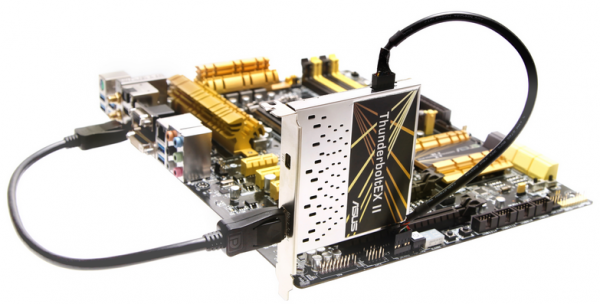Intel has announced a “Thunderbolt™ ready” upgrade program for PC motherboards, desktops and workstation computers.
Thunderbolt “is a dual protocol I/O innovation that dramatically increases transfer performance with bi-directional 10 Gbps speed, and offers daisy chaining to multiple devices, providing flexibility and simplicity for innovative, thin system designs like laptops and Ultrabooks.”
That’s techo-speak for: Thunderbolt is a hardware connection interface that enables really fast data transfers. Just like your computer has USB ports, it could also have Thunderbolt ports. Modern Apple Mac computers already ship with built-in Thunderbolts ports, and there are high-end Windows computers that have Thunderbolt ports. A list of computing products that support Thunderbolt is available here.
According to the announcement, which you may read here:
Thunderbolt makes new experiences possible and developers are seeking to take advantage of Thunderbolt’s key benefits, including simultaneous data and display transfer, with speeds of up to 10Gbps, and daisy-chain connectivity of up to six devices. Building upon that foundation, the first Thunderbolt™ 2 systems were introduced in October this year, with speeds up to 20Gbps, and support for the DisplayPort 1.2 protocol. Thunderbolt is clearly the fastest, most versatile connection to your PC.
The “Thunderbolt™ ready” program allows motherboards that have a GPIO (general purpose input/output) header to be upgraded to support Thunderbolt using a PCIe card. The first manufacturer to sign on to the “Thunderbolt™ ready” upgrade is ASUS. And the first Thunderbolt card is the ASUS ThunderboltEX II (pictured below), which will be available for sale starting next month.
Thunderbolt is said to be supported in Linux kernel 3.12, though I don’t have a Thunderbolt-ready PC and associated device to test how well it works.








